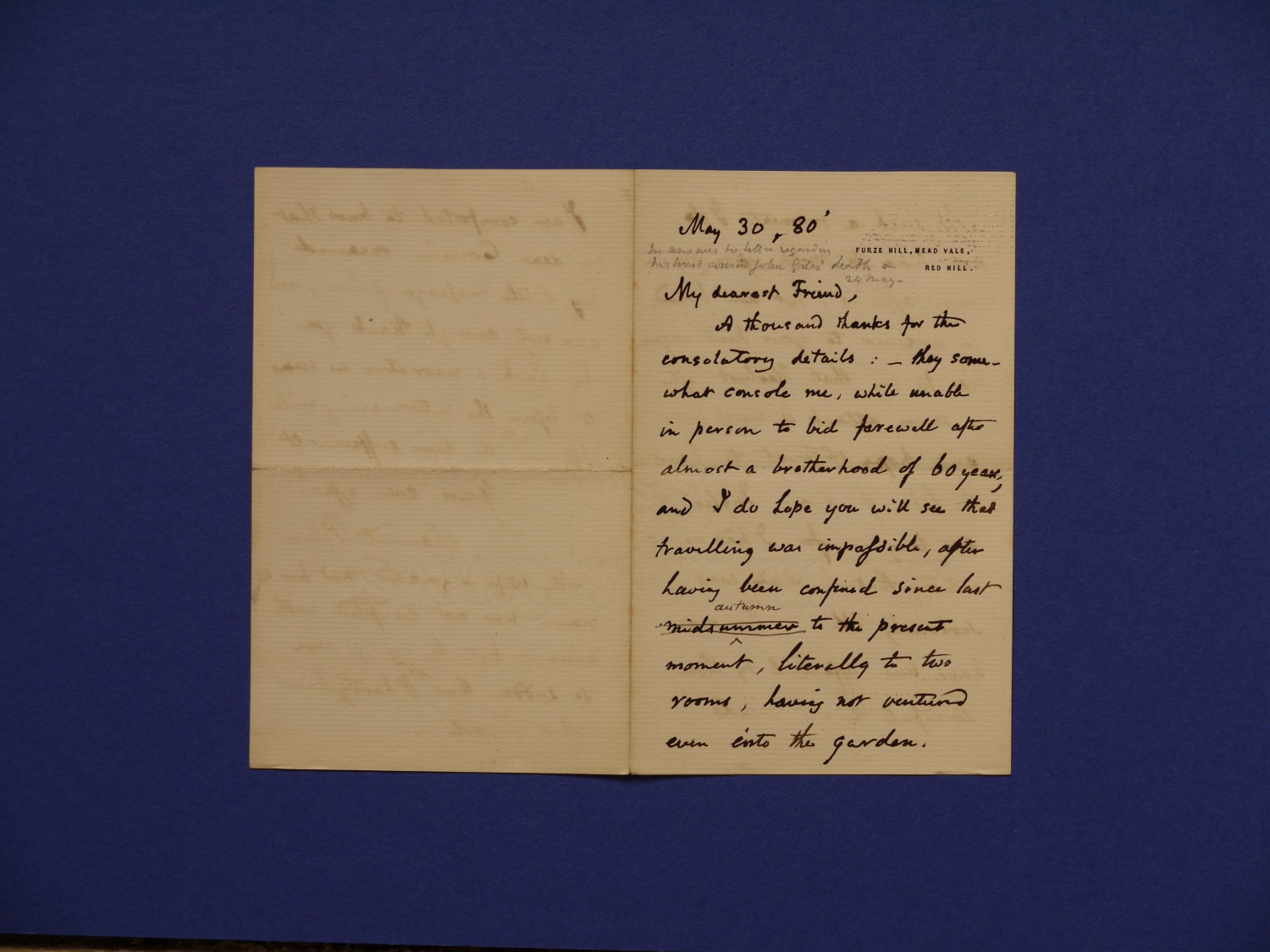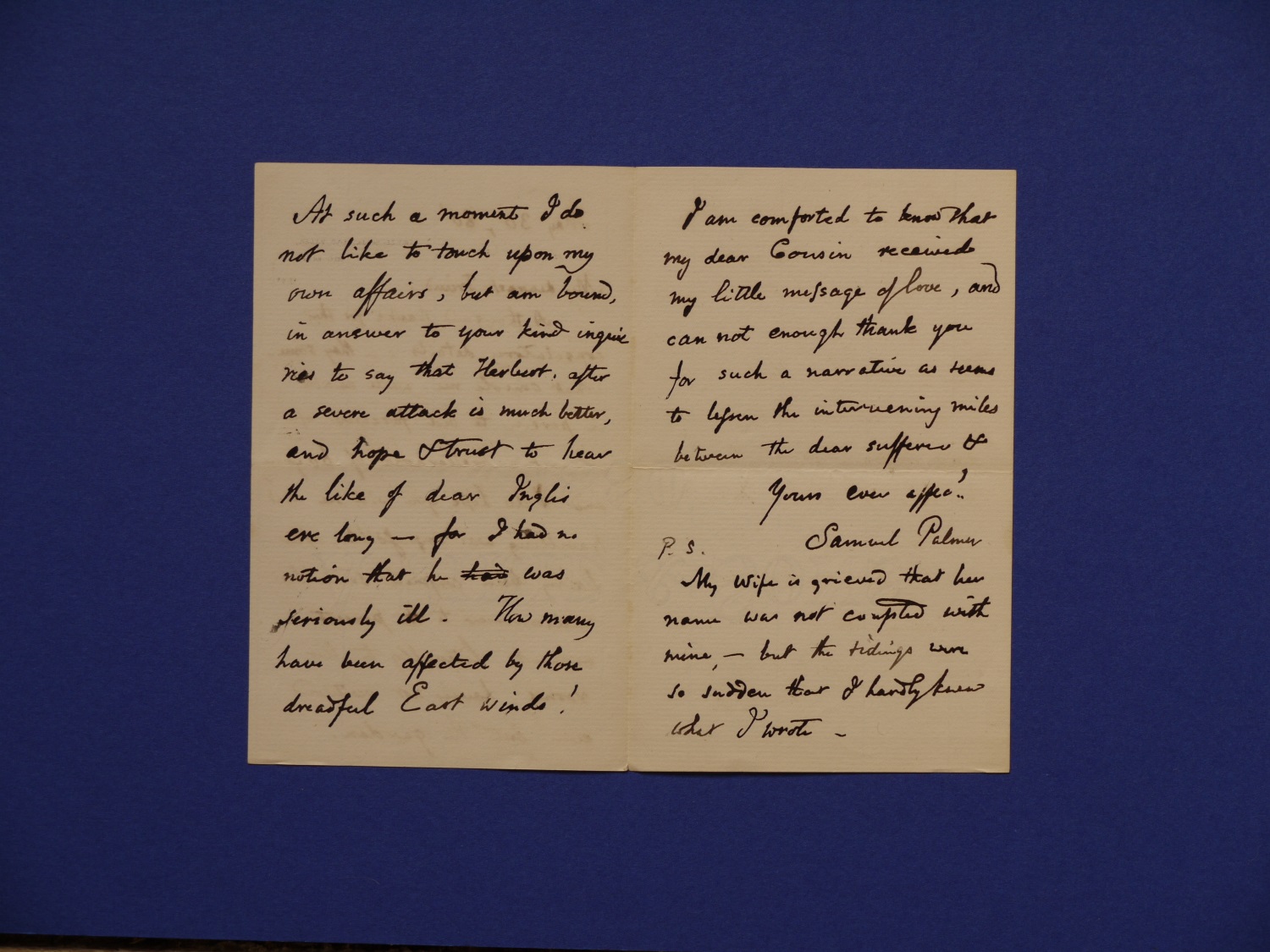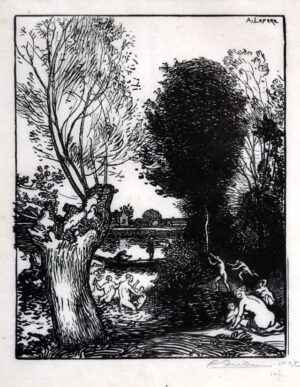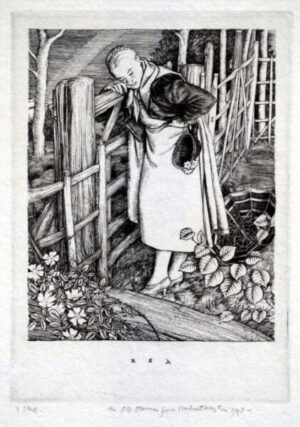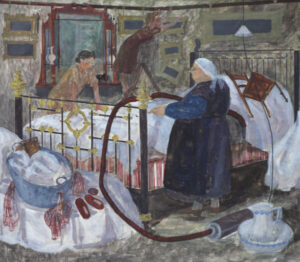Description
Content:
Furze Hill, Mead Vale, Red Hill May 30/1880
My dearest friend,
A thousand thanks for the consolatory details:- they somewhat console me, while unable in person to bid farewell after almost a brotherhood of 60 years, and I do hope you will see travelling was impossible, after having been confined since last autumn to the present moment, literally to two rooms, having not ventured even into the garden. At such a moment I do not like to touch upon my own affairs, but am bound, in answer to your kind inquiries to say that Herbert, after a severe attack is much better, and hope and trust to hear the like of dear Inglis ere long – for I had no notion that he was seriously ill. How many have been affected by those dreadful East winds! I am comforted to know that my dear Cousin received my little message of love, and can not enough thank you for such a narrative as —? to lessen the intervening miles between the dear sufferer and,
Yours ever affectionately,
Samuel Palmer.
P.S. My wife is grieved that her name was not coupled with mine – but the tidings were so sudden that I hardly knew what I wrote.
